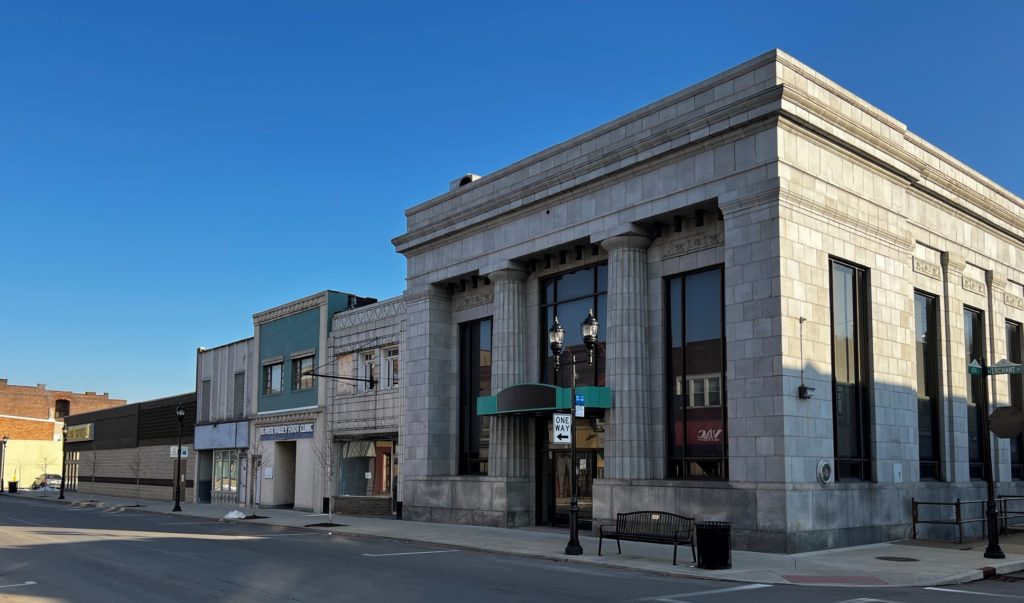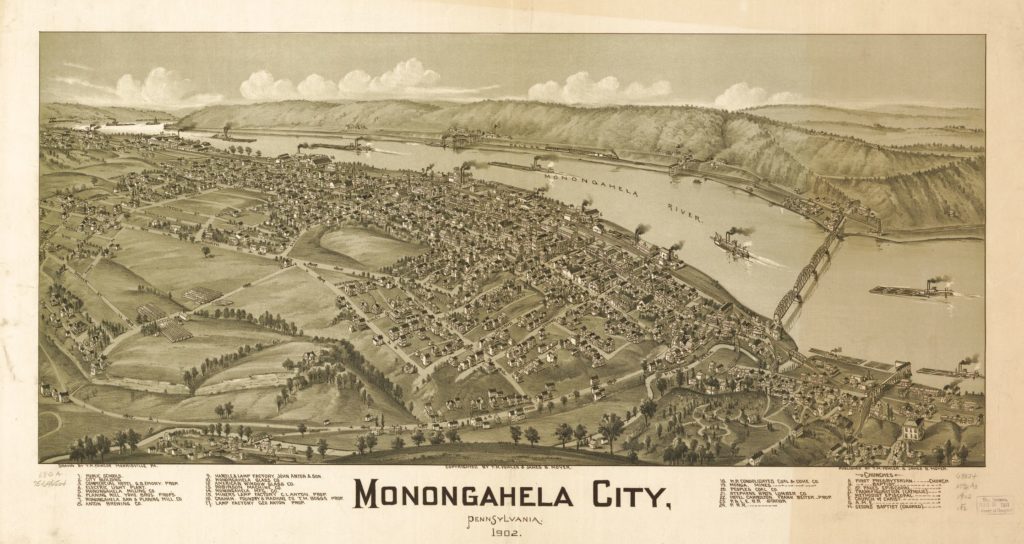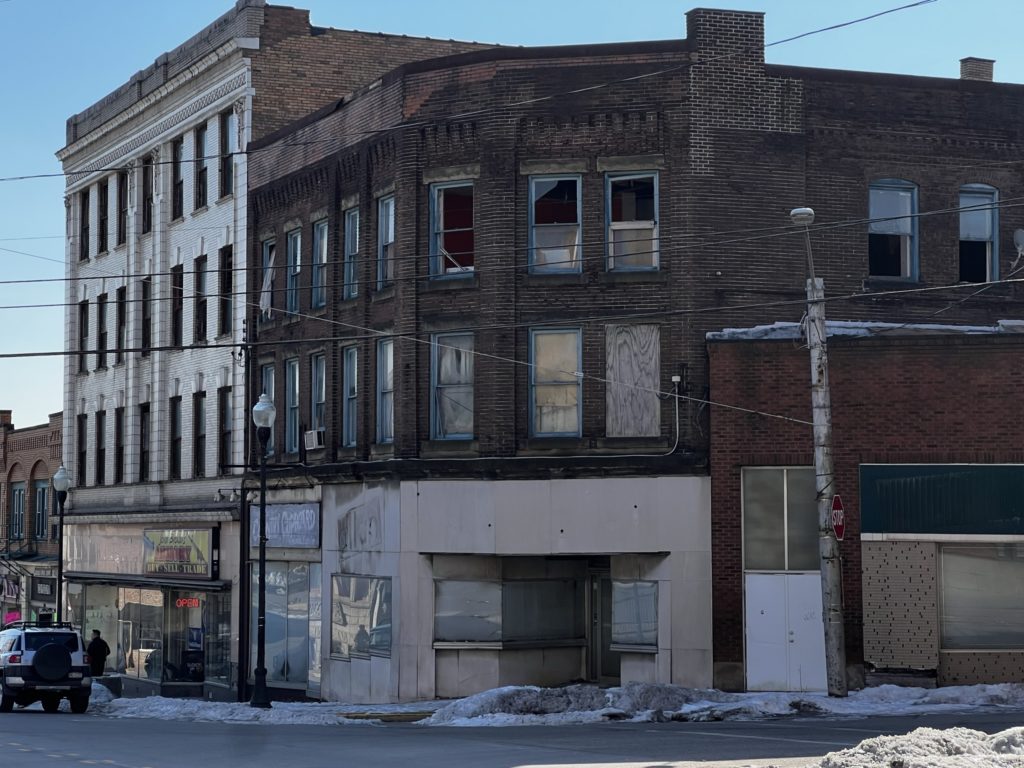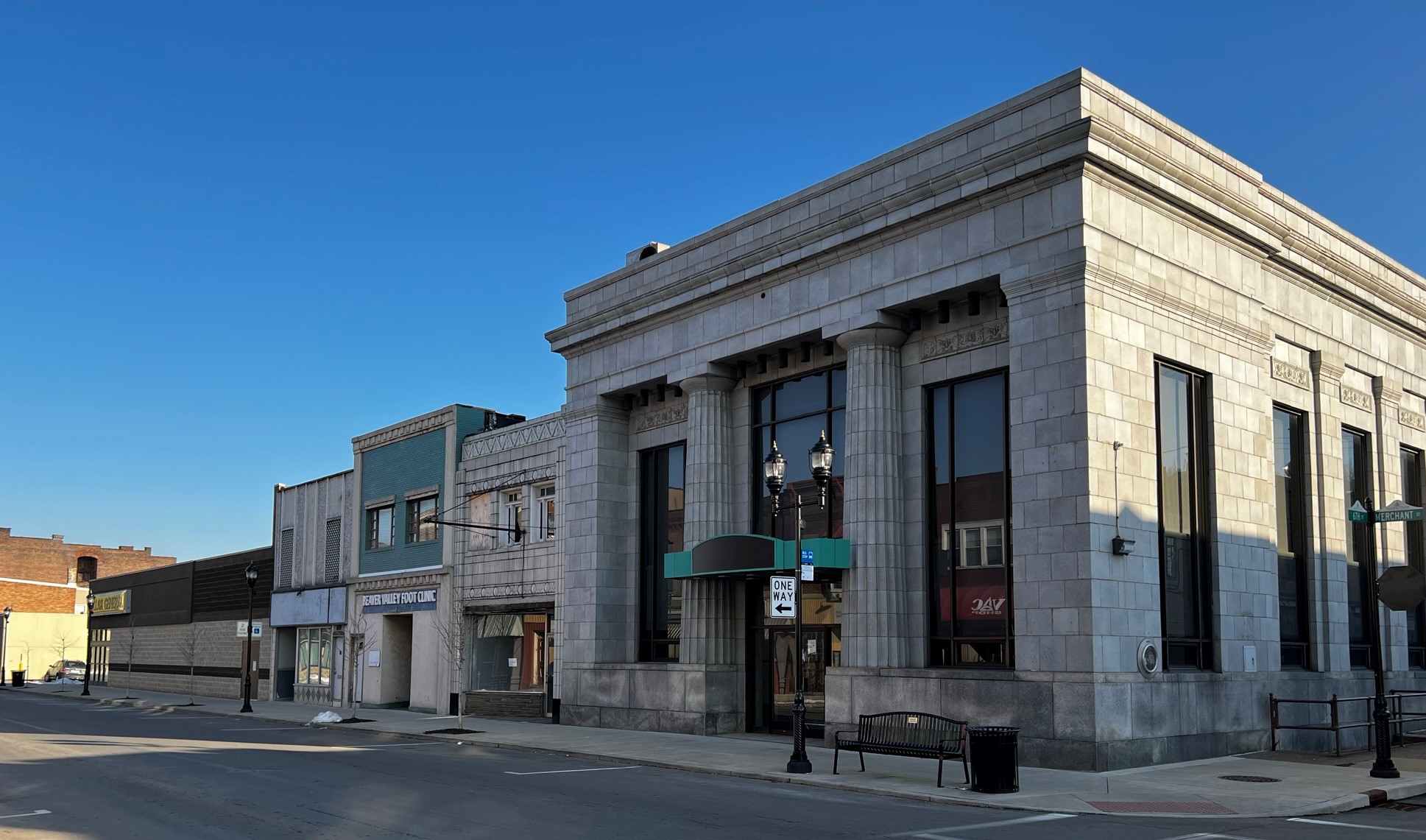The Pennsylvania State Historic Preservation Office (PA SHPO) has undertaken a project to investigate the economic development and community revitalization prospects in specific southwestern Pennsylvania communities that have experienced significant de-industrialization.
The study area includes 12 southwestern Pennsylvania communities over three counties: deindustrialized river towns that are at a crossroads between the economic patterns of the past, the community fabric of the present, and the evolving demands of the future.

The overall goal is to identify ways for communities to leverage their older, historic commercial business districts and key historic buildings, and to determine ways to achieve the region’s economic development potential, and to answer regional, market-based questions regarding appropriate investment, development and sustainability strategies utilizing historic resources.
As you may remember from this post, this project is one of the mitigation measures included the Programmatic Agreement related to the construction of a petrochemical plant along the Ohio River in Beaver County. The project triggered consultation pursuant to Section 106 of the National Historic Preservation Act. Consultation was initiated due to Shell Chemical Appalachia’s (Shell) need for a permit from the United States Army Corps of Engineers.
Background
The organizing structures and buildings of each of the study area’s main streets reflect networks of resource flows that no longer exist. Many of these communities were closed-loop industrial economies whereby raw materials came in, refined and manufactured materials went out, and factory wages supported a fully-contained commercial economy with pharmacies, general stores, barbers, schools, and all of the mainstays of industrialized living.
Jobs were plentiful and local. Needs were met by neighborhood small businesses. Main streets had everything that the community needed to survive. The river towns were individually-unique and complete communities and the unique identities that they built with industry in the last century endure within the people who live there today.

Today those resource flows no longer exist or have changed dramatically. Many factories have closed and the manufacturing that remains no longer employs the volume of labor that made the old economy function. Jobs largely exist outside of the historic community centers and highways bypass the downtowns. Retail and services have relocated to strip malls and office parks where they are able to tap into the sprawling post-industrial landscape of exurban development.
Despite these economic shifts, the legacies of the river towns persist. The river town identities are strong, durable, and compelling even without the industry that made those identities possible. The surviving physical infrastructure is dense and walkable, and the surviving buildings offer fertile ground for entrepreneurship and new investment. As the suburbs and exurbs age, river towns offer something for residents and businesses that can’t be faked: community, history, and a strong sense of place.
Market Study Process
In 2021, PA SHPO engaged economic and planning consultants AKRF and evolve environment::architecture (evolveEA) to perform this market study for 12 communities in southwestern Pennsylvania. Those communities are:
| County | Community | Riverfront |
| Beaver | Aliquippa | Ohio River |
| Beaver | Ambridge | Ohio River |
| Beaver | Beaver | Ohio River |
| Beaver | Beaver Falls | Beaver River |
| Beaver | Midland | Ohio River |
| Beaver | Monaca | Ohio River |
| Beaver | New Brighton | Beaver River |
| Beaver | Rochester | Beaver and Ohio Rivers |
| Washington | Charleroi | Monongahela River |
| Washington | Donora | Monongahela River |
| Washington | Monongahela | Monongahela River |
| Westmoreland | Monessen | Monongahela River |
The AKRF and evolveEA consultant team are working to identify current economic trends and key catalytic projects that could encourage investment in these downtowns. We are also in the process of identifying anchor historic buildings in the communities, which could be the focus of place-based investments to create vibrant, cohesive and connected downtowns.

The consultant team will formulate both regional and community-specific recommendations within the framework of market, place, and identity:
Market: The study will look at the dynamics between historic redevelopment and local and regional economic context to understand when desired projects can be supported with the right mix of community and regional support. The study will highlight catalytic projects that encourage investment and will connect projects and investments that have benefit across the community.
Place: The study will examine current character and future opportunities across different scales of place; from artifacts, to buildings, to corridors, to districts. The study can help the communities prioritize redevelopment to serve the existing population and attract visitors with quality design and unique experiences. The study will identify projects that strengthen commercial districts and will imagine how historic buildings and sites can be catalytic in inspiring others to take action.
Identity: Historic buildings and districts define a community’s identity, ensuring that cultural heritage is preserved and that the community controls its creative narrative. Vibrant streets and unique destinations showcase historic and cultural legacy and enable distinctive economic development strategies.
The study commenced in December of 2021 and will be completed in April 2022.

Reflecting Community Priorities
PA SHPO is working with AKRF and evolveEA to gather information by summarizing pre-existing community and regional plans, analyzing available planning and economic data, performing site visits to each community, meeting with stakeholder focus groups, and collecting general feedback through an online map-based survey and at two public meetings.
The project team will be interviewing groups of stakeholders including: planning and community development professionals from Beaver, Westmoreland, and Washington counties; regional historic preservation advocates; and additional regional economic development and planning experts.
In addition to the focus group meetings, two public meetings will be held virtually:
Monongahela Valley Communities:
Charleroi, Donora, Monongahela in Washington County and Monessen in Westmoreland County.
Wednesday 16 March 2022, 6:30pm-8:00pm
Beaver & Ohio Valley Communities:
Aliquippa, Ambridge, Beaver, Beaver Falls, Midland, Monaca, New Brighton, and Rochester in Beaver County
Thursday 17 March 2022, 6:30pm-8:00pm
These public meetings will include a short presentation on the project and an opportunity for you to provide feedback about your community to the project team. Please share these public meeting dates with your organizations and anyone you feel may have an interest.
These virtual meetings are free but registration is required. To RSVP, please send an email to elijah@evolveea.com. A meeting invitation for these virtual meetings will be shared the week of the meetings to those who RSVP.
For more information or to offer your own input, please contact PA SHPO’s Bill Callahan, Western Region Community Preservation Coordinator, at wcallahan@pa.gov or Elizabeth Rairigh, Preservation Services Manager, at erairigh@pa.gov.
This week’s post is written by guest contributors Madeleine Helmer/AKRF and Elijah Hughes/evolveEA.
Madeleine Helmer is a Planner and Historic Preservation Specialist in AKRF’s Environmental Services Group. Ms. Helmer is experienced in the survey, evaluation, and documentation of cultural resources, as well as land use and environmental planning for urban municipalities. She has produced cultural resource surveys and National Register nominations in compliance with federal, state, and local regulations. She has completed impacts analyses in compliance with Section 106 of the National Historic Preservation Act (NHPA), the National Environmental Policy Act (NEPA), the New York State Historic Preservation Act, and other legislation.
Elijah Hughes is a Pittsburgh-based planner and designer at evolve environment::architecture (evolveEA). At evolveEA, Elijah works with developers, advocates, public agencies, and elected officials to create meaningful civic places and powerful public infrastructure. Elijah also teaches Architecture at Carnegie Mellon University and was previously a researcher for the Carnegie Museum of Natural History.
Comment Policy
PHMC welcomes and encourages topic-related comments on this blog. PHMC reserves the right to remove comments that in PHMC’s discretion do not follow participation guidelines.
Commenters and Comments shall be related to the blog post topic and respectful of others who use this site.
Commenters and Comments shall not: use language that is offensive, inflammatory or provocative (this includes, but is not limited to, using profanity, obscene, or vulgar comments); disparage other commenters or people; condone illegal activity; identify the location of known or suspected archeological sites; post personal information in comments such as addresses, phone numbers, e-mail addresses or other contact details, which may relate to you or other individuals; impersonate or falsely claim to represent a person or an organization; make any commercial endorsement or promotion of any product, service or publication.
If you would like to comment on other topics not related to this blog post but related to PHMC, please fill out the PHMC Contact Us Form.

Please register me for the event on March 17th.
I would like to RSVP to attend the meeting, I am a resident of Ambridge and also the vice president of Ambridge Area School board. Thank you in advance and I look forward to future meetings.
Please register me for the event.